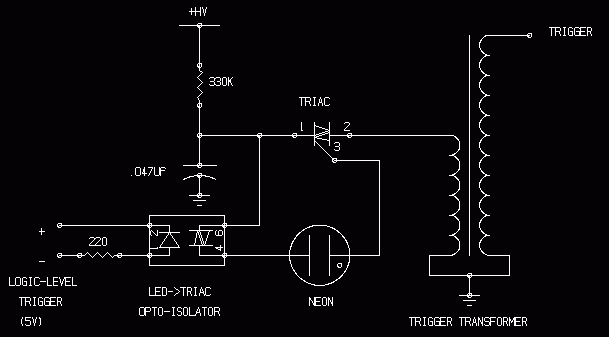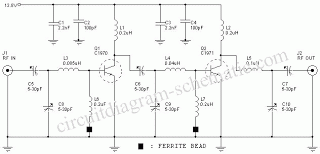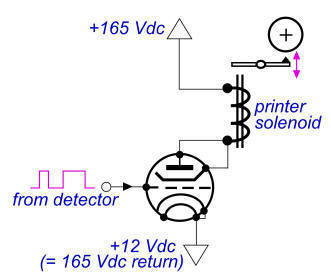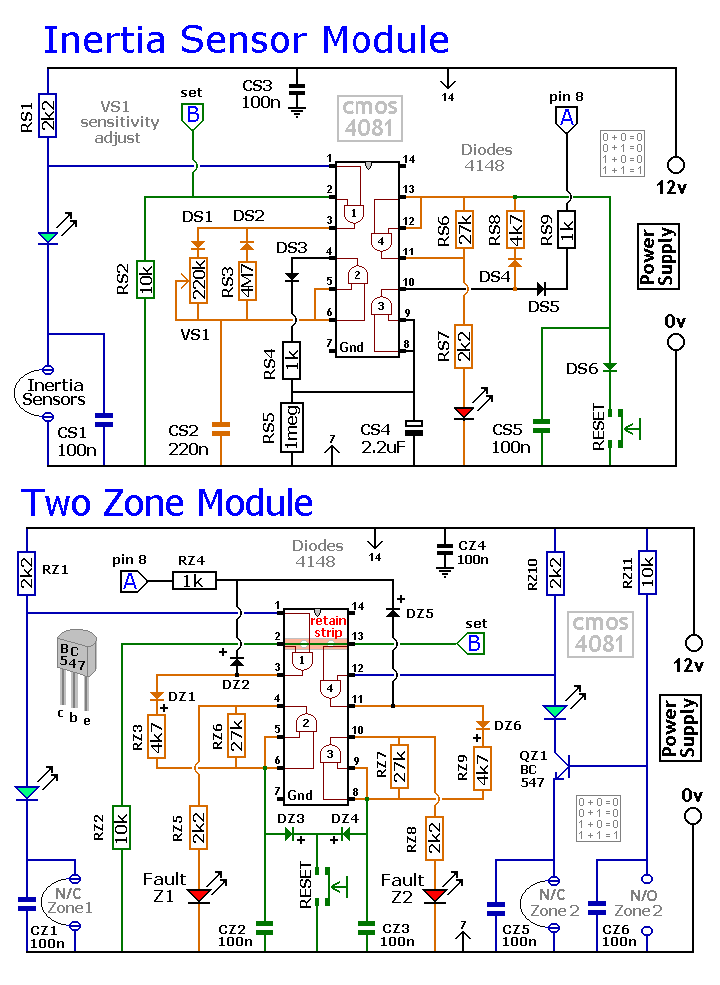
Various Schematics and Diagrams

Energy storage capacitors in even the smallest disposable camera flash powered by a 1.5 V AA battery can be hazardous under certain conditions. Line-powered devices, regardless of size, may present additional risks due to high power at high voltage and are often non-isolated (lacking a power transformer). It is crucial to refrain from troubleshooting, repairing, or modifying such devices without a thorough understanding of all applicable safety guidelines for high voltage and/or line-connected electrical and electronic systems. Before experimenting with any equipment that uses or generates high voltages or is connected to the AC line—even opening a dusty disposable camera, which may still have a charged capacitor—consult the document titled "Safety Guidelines for High Voltage and/or Line Powered Equipment." Apparent innocuous devices can pose serious dangers. A comprehensive collection of online schematics and resources can be found on Tomi Engdahl's Lights and Electronics Page. Additional documents are available at the Sci. Electronics Repair (S.E.R) FAQ website or its mirror sites, which may assist in the design, testing, and repair of electronic equipment. The Main Table of Contents (ToC) offers links to various troubleshooting and repair information, general electronics, an array of schematics, over 1,000 technology links, and more. Most of these documents are well-formatted, indexed, and cross-referenced. Silicon Sam's Technology Resource, which may also be found on this site and others, typically contains slightly more recent versions of many of these documents; however, those listed under the S.E.R FAQ Main ToC are generally more user-friendly, with minimal content differences. This basic circuit can supply up to 30 kilovolts or more from a low voltage DC source utilizing a flyback (LOPT) transformer salvaged from a television or computer monitor. A typical output with a 12 VDC 2 A power supply or battery yields approximately 12,000 V, with a current at full voltage typically ranging from 1 to 2 mA. Higher currents are attainable, but the output voltage will decrease. At 2 kV, more than 10 mA may be achievable depending on the specific flyback transformer used. The circuit employs a pair of 555 timers to generate variable frequency and variable pulse width drive to an inverter using a flyback transformer salvaged from either a black and white or color television or computer monitor. The input voltage can vary from approximately 5 to 24 V, utilizing a flyback transformer from a MAC Plus.
This circuit design is based on utilizing a flyback transformer (LOPT) to step up low voltage DC to high voltage AC. The 555 timer integrated circuits (ICs) are configured in astable mode to generate a pulse-width modulated (PWM) signal that controls the switching of the flyback transformer. The circuit can be adjusted for different frequencies and pulse widths, allowing for fine-tuning of the output voltage and current characteristics.
The flyback transformer operates by storing energy in its magnetic field during the 'on' time of the PWM signal and releasing it as high voltage during the 'off' time. This switching action is crucial in generating the high voltages necessary for applications such as igniting gas burners, powering gas discharge lamps, or other high voltage applications.
The circuit should include appropriate safety features, such as fuses or circuit breakers, to prevent overload conditions. Additionally, high voltage components must be properly insulated and housed to prevent accidental contact. When assembling the circuit, care must be taken to ensure all connections are secure and that the circuit is tested in a safe environment, ideally with appropriate high voltage measuring equipment to verify output levels without direct contact.
It is essential to follow all safety protocols when working with high voltage circuits, including using insulated tools, wearing protective gear, and ensuring that the workspace is free from conductive materials. Proper training and understanding of high voltage electronics are critical to prevent accidents and ensure safe operation of the circuit.Even the energy storage capacitors in even the smallest disposable camera flash operating from a 1. 5 V AA battery can be deadly under the wrong conditions. Line powered devices - even little ones - may have an added danger of high power at high voltage AND are often non-isolated (no power transformer). Do not attempt to troubleshoot, repair, or modify such equipment without understanding and following ALL of the relevant safety guidelines for high voltage and/or line connected electrical and electronic systems.
Before thinking about experimenting with anything using or producing high voltages or connected to the AC line - even opening up a disposable camera that may have been laying around gathering dust (the capacitor can still be charged - outch!), see the document: Safety Guidelines for High Voltage and/or Line Powered Equipment. Something that looks innocent can really ruin your entire day! Perhaps the larges collection of all sorts of on-line schematics and links in the explored universe can be found Tomi Engdahl`s Lights and Electronics Page.
There are many other documents at the Sci. Electronics. Repair (S. E. R) FAQ Web site or one of its mirror sites which may be of use in the design, testing, and repair of electronic equipment. The Main Table of Contents (ToC) provides links to a variety of information on troubleshooting and repair of many types of equipment, general electronics, an assortment of schematics, over 1, 000 technology links, and much more.
Most of these documents are nicely formatted, indexed, and cross-referenced. ( Silicon Sam`s Technology Resource, which may be present at this site and others, usually contains slightly more recent versions of many of these same documents but most of those under the S. E. R FAQ Main ToC are easier to use and the actual content differences are likely to be minor. ) This basic circuit is capable of supplying up to 30 kilovolts or more from a low voltage DC source using a flyback (LOPT) transformer salvaged from a TV or computer monitor.
Typical output with a 12 VDC 2 A power supply or battery will be around 12, 000 V. Current at full voltage is typically around 1 to 2 mA. Higher currents are available but the output voltage will drop. At 2 kV, more than 10 mA may be possible depending on your particular flyback transformer. This circuit uses a pair of 555 timers to provide variable frequency variable pulse width drive to an inverter using a flyback transformer salvaged from a black and white or color TV or computer monitor. The input voltage can range from about 5 to 24 V. Using a flyback from a MAC Plus 🔗 External reference
This circuit design is based on utilizing a flyback transformer (LOPT) to step up low voltage DC to high voltage AC. The 555 timer integrated circuits (ICs) are configured in astable mode to generate a pulse-width modulated (PWM) signal that controls the switching of the flyback transformer. The circuit can be adjusted for different frequencies and pulse widths, allowing for fine-tuning of the output voltage and current characteristics.
The flyback transformer operates by storing energy in its magnetic field during the 'on' time of the PWM signal and releasing it as high voltage during the 'off' time. This switching action is crucial in generating the high voltages necessary for applications such as igniting gas burners, powering gas discharge lamps, or other high voltage applications.
The circuit should include appropriate safety features, such as fuses or circuit breakers, to prevent overload conditions. Additionally, high voltage components must be properly insulated and housed to prevent accidental contact. When assembling the circuit, care must be taken to ensure all connections are secure and that the circuit is tested in a safe environment, ideally with appropriate high voltage measuring equipment to verify output levels without direct contact.
It is essential to follow all safety protocols when working with high voltage circuits, including using insulated tools, wearing protective gear, and ensuring that the workspace is free from conductive materials. Proper training and understanding of high voltage electronics are critical to prevent accidents and ensure safe operation of the circuit.Even the energy storage capacitors in even the smallest disposable camera flash operating from a 1. 5 V AA battery can be deadly under the wrong conditions. Line powered devices - even little ones - may have an added danger of high power at high voltage AND are often non-isolated (no power transformer). Do not attempt to troubleshoot, repair, or modify such equipment without understanding and following ALL of the relevant safety guidelines for high voltage and/or line connected electrical and electronic systems.
Before thinking about experimenting with anything using or producing high voltages or connected to the AC line - even opening up a disposable camera that may have been laying around gathering dust (the capacitor can still be charged - outch!), see the document: Safety Guidelines for High Voltage and/or Line Powered Equipment. Something that looks innocent can really ruin your entire day! Perhaps the larges collection of all sorts of on-line schematics and links in the explored universe can be found Tomi Engdahl`s Lights and Electronics Page.
There are many other documents at the Sci. Electronics. Repair (S. E. R) FAQ Web site or one of its mirror sites which may be of use in the design, testing, and repair of electronic equipment. The Main Table of Contents (ToC) provides links to a variety of information on troubleshooting and repair of many types of equipment, general electronics, an assortment of schematics, over 1, 000 technology links, and much more.
Most of these documents are nicely formatted, indexed, and cross-referenced. ( Silicon Sam`s Technology Resource, which may be present at this site and others, usually contains slightly more recent versions of many of these same documents but most of those under the S. E. R FAQ Main ToC are easier to use and the actual content differences are likely to be minor. ) This basic circuit is capable of supplying up to 30 kilovolts or more from a low voltage DC source using a flyback (LOPT) transformer salvaged from a TV or computer monitor.
Typical output with a 12 VDC 2 A power supply or battery will be around 12, 000 V. Current at full voltage is typically around 1 to 2 mA. Higher currents are available but the output voltage will drop. At 2 kV, more than 10 mA may be possible depending on your particular flyback transformer. This circuit uses a pair of 555 timers to provide variable frequency variable pulse width drive to an inverter using a flyback transformer salvaged from a black and white or color TV or computer monitor. The input voltage can range from about 5 to 24 V. Using a flyback from a MAC Plus 🔗 External reference





